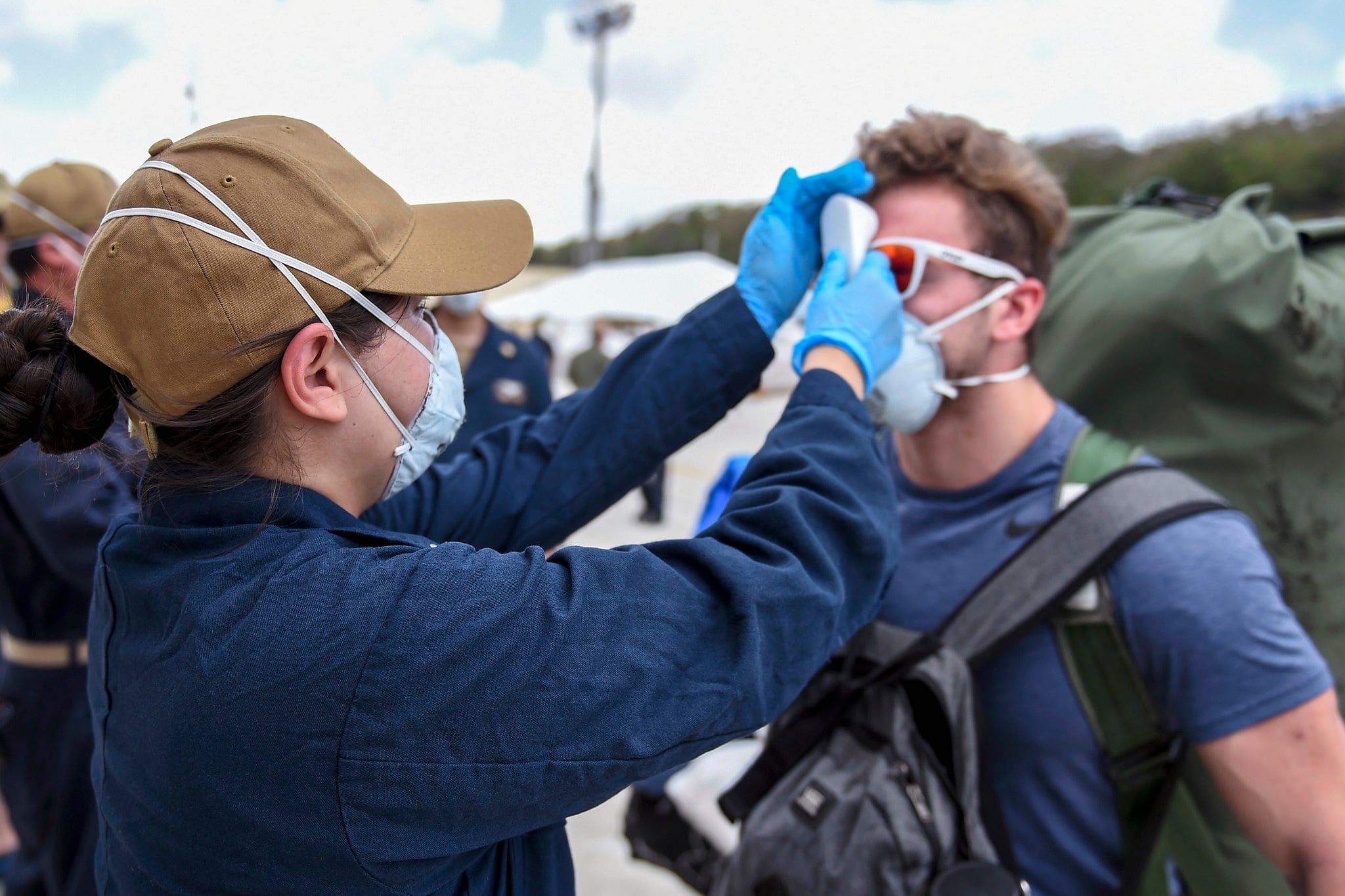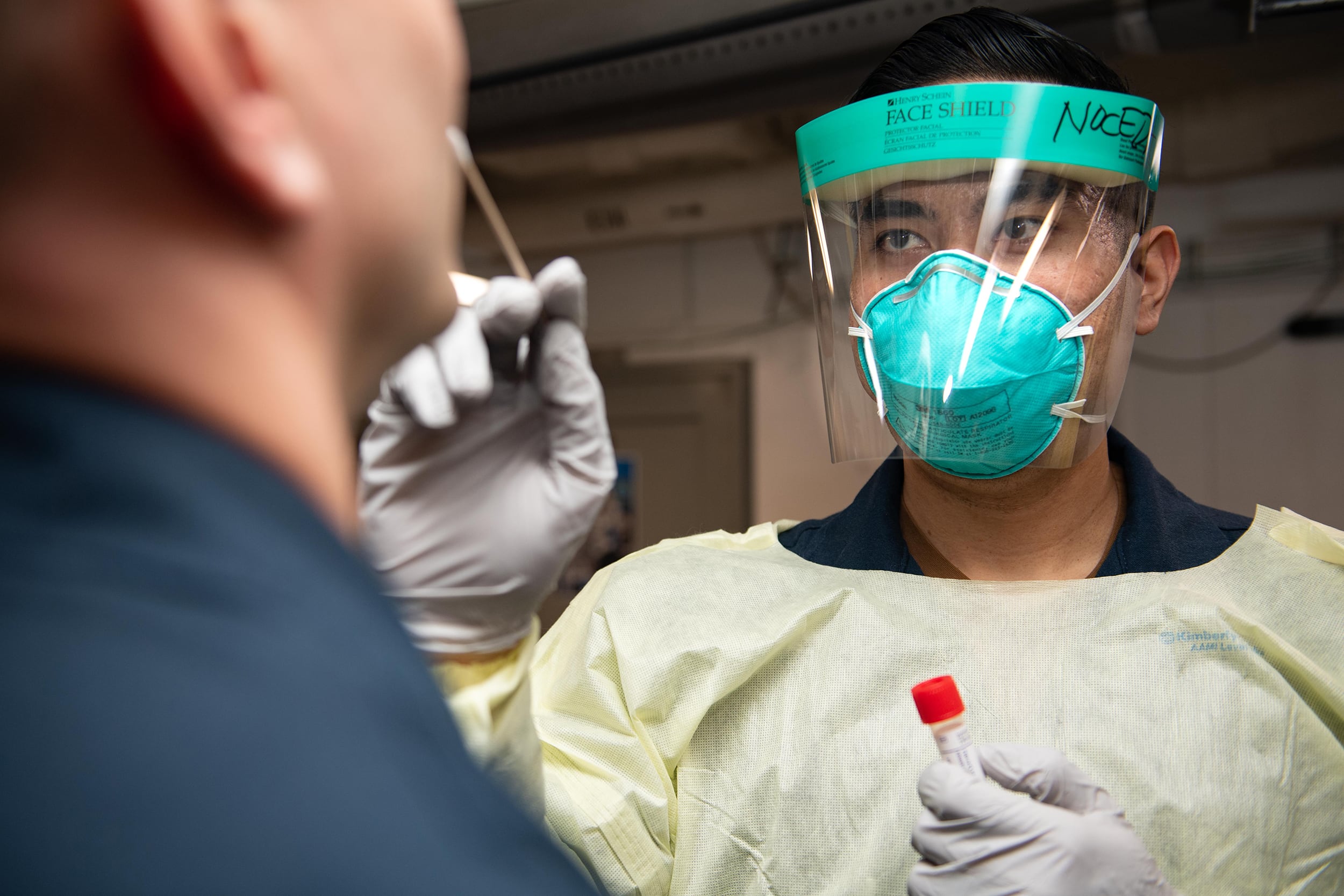Big Navy on Monday released new instructions for how sailors will deploy and operate safely during the COVID-19 pandemic while warning that such mitigation measures will “be in place for a lengthy period, and this will pose challenges for our people and their families.”
The guidelines constitute minimum actions required to deploy, including pre-deployment medical screenings, at least two weeks of movement restriction in a “sequestered status” as well as regular hand washing and masking while underway, according to a Navy release announcing the plan.
Several units that have deployed since the pandemic began have already implemented such measures.
“As we learn more about this virus, the Navy will continue to take steps necessary to preserve our operational readiness while protecting the health off our forces,” Vice Adm. Phillip Sawyer, the operations chief in charge of coordinating the Navy’s response to COVID-19, said in the release.
The guidance warns that while testing is the only way to find asymptomatic sailors — those who have the virus but show no symptoms — “testing does not guarantee a clean deploying unit due to the potential for false negative tests,” a reality that makes social distancing, face coverings and deep cleanings all the more vital.
RELATED

Before deployment, sailors will also undergo an assessment of their exposure history to the virus, temperature checks, a review for virus signs and symptoms, as well as “a thorough evaluation of the member’s high-risk factors,” the release states.
Recommendations to deploy sailors with high-risk factors will have to be approved by a command’s immediate superiors, according to the guidance.
Daily screenings will involve questionnaires and temperature checks as well.
“This guidance will also apply to any ship riders, direct support personnel, and all other penetrating an established clean bubble,” the release states.
Anyone trying to come aboard ship or sub will have to complete a two-week sequestration before embarking.
Commanders will have latitude on how they safeguard “their command’s bubble” in the event of short-notice visits aboard ships.
Those who test positive during a deployment should be sequestered in small berthing areas like staterooms, according to the guidance.

Before deployments, commanders will have to develop the “operational bench for redline personnel” to maintain nuclear power plants, bridge and combat information center watches and medical staffing, according to the guidance.
“It is imperative that all hands understand the importance of minimizing spread of COVID-19 within our ranks,” the release states. “We will continue to update our guidance as our understanding of COVID-19 evolves.”
The Navy reported 2,376 total COVID-19 cases among the ranks as of Monday.
Of those cases, 1,531 have recovered, one sailor remains hospitalized and one sailor has died.
The sea service has stopped reporting outbreak numbers by local units or bases, making it unclear from where the cases are stemming.
The aircraft carrier Theodore Roosevelt, sidelined in Guam after an outbreak that cost the captain and the acting Navy secretary their jobs, has since returned to sea.
When the Navy last reported a case count for the TR on April 30, there were 1,102 active COVID-19 cases among the ship’s ranks.
Geoff is the managing editor of Military Times, but he still loves writing stories. He covered Iraq and Afghanistan extensively and was a reporter at the Chicago Tribune. He welcomes any and all kinds of tips at geoffz@militarytimes.com.





